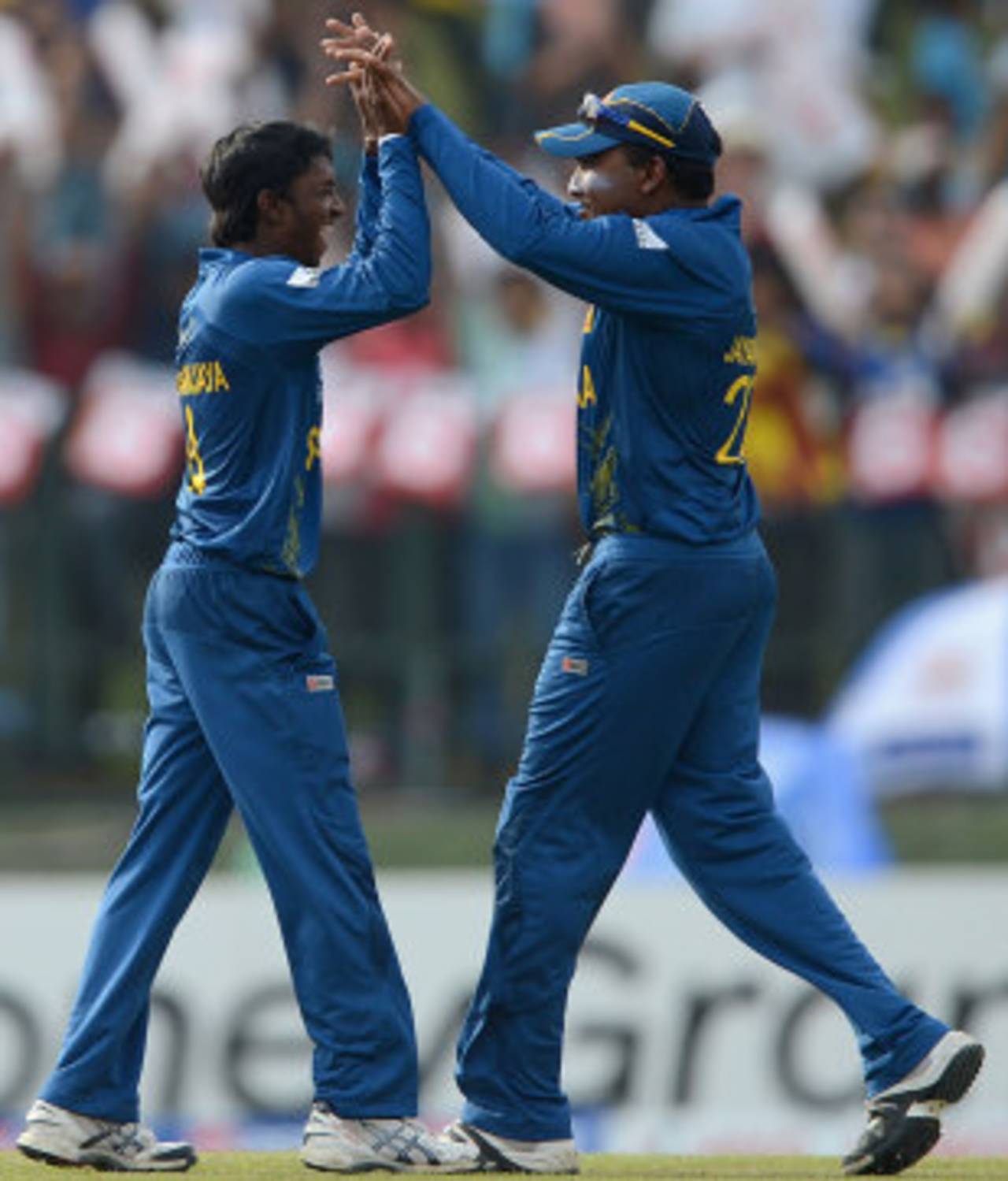At the dawn of one-day cricket, the only fielding restriction applied to the format was the rule it had inherited from Tests: only two men on the leg side behind square. Since then ODIs have been through several facelifts. The 1992 rule change that allowed only two men outside a 30-yard perimeter spawned a new breed of opening batsman. Perhaps sensing that none of the more recent changes had helped enhance ODI cricket to any great extent, the ICC has now enforced perhaps its most radical change to the format since 1992. Only four men are now allowed outside the circle at any time.
Superficially,
the rules should achieve what they are intended to do. Batsmen need no longer accumulate dourly in the middle overs and are guaranteed more frequent reward for their aggression. Fielding captains are forced to innovate and be more aggressive. In the
first match played under the new rules on Sunday,
Mahela Jayawardene employed his extra man in the circle as a catcher for much of the New Zealand innings and had a man caught at short midwicket in the 34th over as a result.
On the whole, strokemaking remains well rewarded throughout the innings, and ODIs are accorded the distinction they supposedly require to remain relevant in a three-format universe. But has the collateral been adequately considered?
"I'm not very comfortable with all these changes and I don't think it's the right way to go forward," Jayawardene said. "Unless there is sufficient assistance to the spin bowlers on the wicket, I feel the spinners will get targeted. They will try to bowl on one side of the wicket and become one dimensional, whereas the art of spin is about turning the ball and getting batsmen out. A spinner needs the cover, and you're not getting that with the new rules. As a batsman, it's easy for me, but as a captain, I feel for the bowlers."
The major problem for spinners is that they must now sacrifice one of their deep fielders down the ground in order to have three men patrolling the fence square of the wicket. This makes overpitching particularly hazardous and discourages flight. When batsmen use their feet, even if the spinner beats him in the air, the batsman need only muscle the ball beyond the fielder in the circle. On quicker outfields, a batsman might collect four from a ball that dipped before he anticipated and caught the toe-end of the bat before clearing mid-off or mid-on.
The other option for spinners is to have both men down the ground back on the boundary, and have a sweeper either side of the pitch. But this would greatly reduce the risk of slog-sweeping, as the batsman only needs to avoid a single deep legside fielder. If they were to put two men back on the legside, the off side is susceptible to shots played inside-out, and even slight errors in line will result in boundaries.
The ICC intended this rule to invite more aggression from both the batsmen and the fielding side, but in doing so, it may have stifled attack and creativity in spin bowling. The darters and arm-ballers that now abound in Twenty20 cricket may not find the new rule an insurmountable hurdle, but the servants of flight and guile will suddenly find their already difficult plight direr. Fewer men on the boundary means the variety of deliveries they can confidently attempt is reduced. Flat, fast and accurate becomes the preferred modus operandi.
"The two new balls have already made it difficult for spinners in some conditions, and now this new rule makes it tougher again," Jayawardene said. "Yesterday, the pitch looked much slower than the previous match and both teams would have been tempted to play two spinners, but both opted out, purely because of the new rule. The way things are going, unless you are a brilliant spinner who can bowl well in any conditions, most spinners will find it difficult to find a place in the playing XI. You'll probably just go with the part-time bowlers and see if you can get the job done that way."
By imposing a new ball at each end, the ICC has rid ODIs of one of cricket's most compelling sights. Countless youngsters have been inspired to bowl fast by the reversing delivery that dives late at the stumps like a snake suddenly smelling prey, but that is no longer achievable with balls that do not age more than 25 overs. Now, attacking spinners have been put in peril. Isn't its skill and artistry the reason most fall in love with the game in the first place?
Andrew Fernando is ESPNcricinfo's correspondent in Sri Lanka
